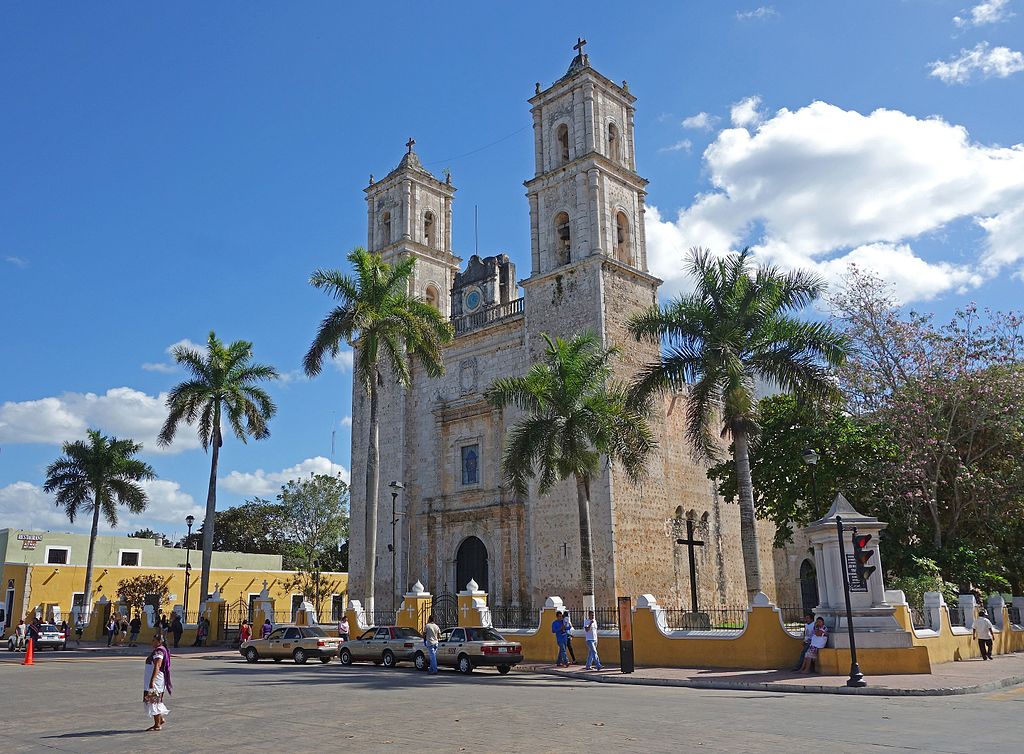The Yucatan Peninsula through time

The Yucatan peninsula is a land rich in history and diversity, where different eras coexist and blend together. This, to create a unique and fascinating cultural tapestry. Here, you can explore the majestic pyramids and temples of the Mayan civilization, marvel at the ornate colonial churches and buildings, relax in the luxurious modern resorts of Cancun, and witness the cutting-edge eco-architecture of Tulum. Each destination in the Yucatan peninsula offers a glimpse into a different era. Here are some tips on the Yucatan Peninsula through time.
The Yucatan Peninsula through time: Mayan times
The Yucatan Peninsula is a treasure of ancient Mayan ruins. They offer a glimpse into the region’s rich history and culture. One of the most famous sites is Chichen Itza. These ruins are about 75 miles west of Cancun. This UNESCO World Heritage Site was once a bustling city. It reached its peak during the 10th century. Visitors can explore iconic structures. Don’t miss the towering Pyramid of Kukulcan, the Temple of the Warriors, and the Great Ball Court. This is the largest and best-preserved ball court in Mesoamerica. The site also features a sacred cenote, where offerings and sacrifices were made to the gods.
Another must-visit Mayan ruin site is Tulum, located on the eastern coast of the Yucatan Peninsula. The Mayans built this ancient walled city around 1200 AD. It served as a port for trading in precious goods such as jade and turquoise. The ruins sit on a cliff overlooking the Caribbean Sea, providing stunning views of the turquoise waters.
Colonial times
The Yucatan Peninsula is a treasure trove of colonial-era architecture, with many stunning churches and ex-convents dotting the landscape. One of the most prominent examples is the San Ildefonso Cathedral in Merida, which dates back to the 16th century. With its ornate facade and soaring bell towers, this cathedral is a testament to the skill of the Spanish architects who designed it. Another notable church is the Convent of San Bernardino de Siena in Valladolid, built in the 16th century by Franciscan friars.
In addition to these well-known examples, there are many other colonial-era churches and ex-convents scattered throughout the Yucatan Peninsula, each with its own unique history and architecture.
Modern architecture
Cancun and the Riviera Maya are home to some of the most stunning modern architecture hotels in the world. One of the most famous ones is the Grand Velas Riviera Maya. The hotel has a unique style that is designed to be environmentally friendly. The resort is made up of three different areas, including an adult-only section, a family section, and a Zen garden. Each section has its own unique style, but they all share the same luxurious amenities, including spacious suites, gourmet dining options, and a world-class spa.
The Yucatan Peninsula through time: The future is now
Tulum has become one of the most popular destinations in the Yucatan Peninsula for its breathtaking beaches, lush jungle, and remarkable eco-chic hotels. Many of these hotels feature futuristic eco-architecture, blending seamlessly with the surrounding environment. One of the most famous examples is the Azulik hotel, a masterpiece of sustainable architecture that sits atop stilts and boasts magnificent views of the Caribbean Sea. This adults-only hotel features private wooden villas that offer a unique experience, with no electricity or air conditioning, and lit only by candles and lanterns at night.
Another stunning example of eco-chic architecture in Tulum is the Be Tulum Hotel, which has won numerous awards for its sustainable design. The hotel features a minimalist and elegant style, with thatched roofs, natural stone, and locally sourced wood. Guests can enjoy yoga classes in a beachfront pavilion, swim in a beautiful pool surrounded by palm trees, and indulge in delicious organic cuisine at the hotel’s restaurant.
